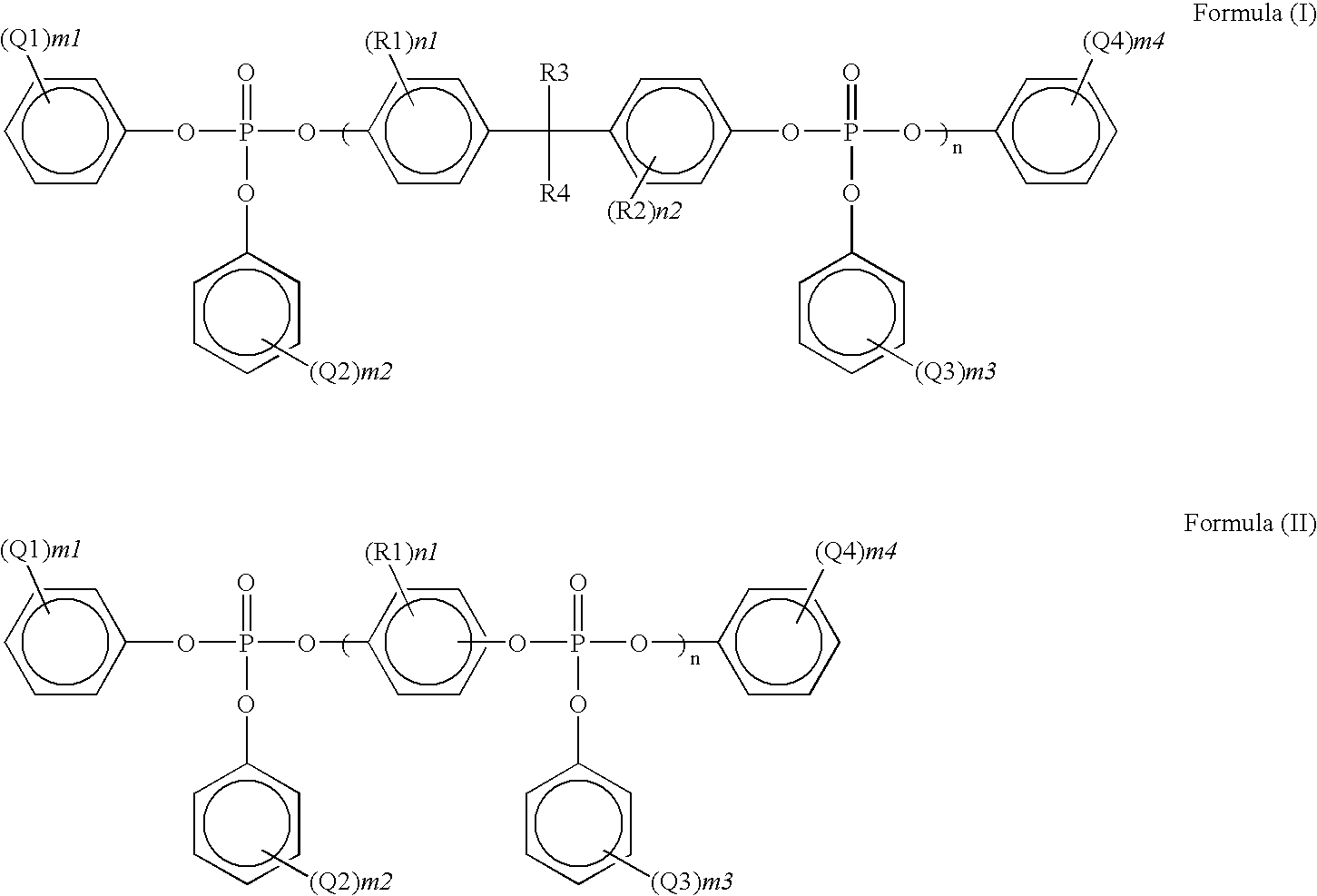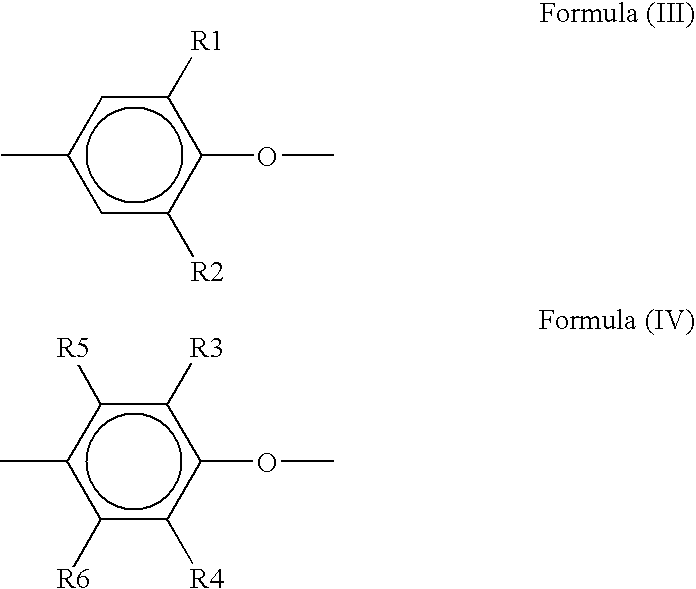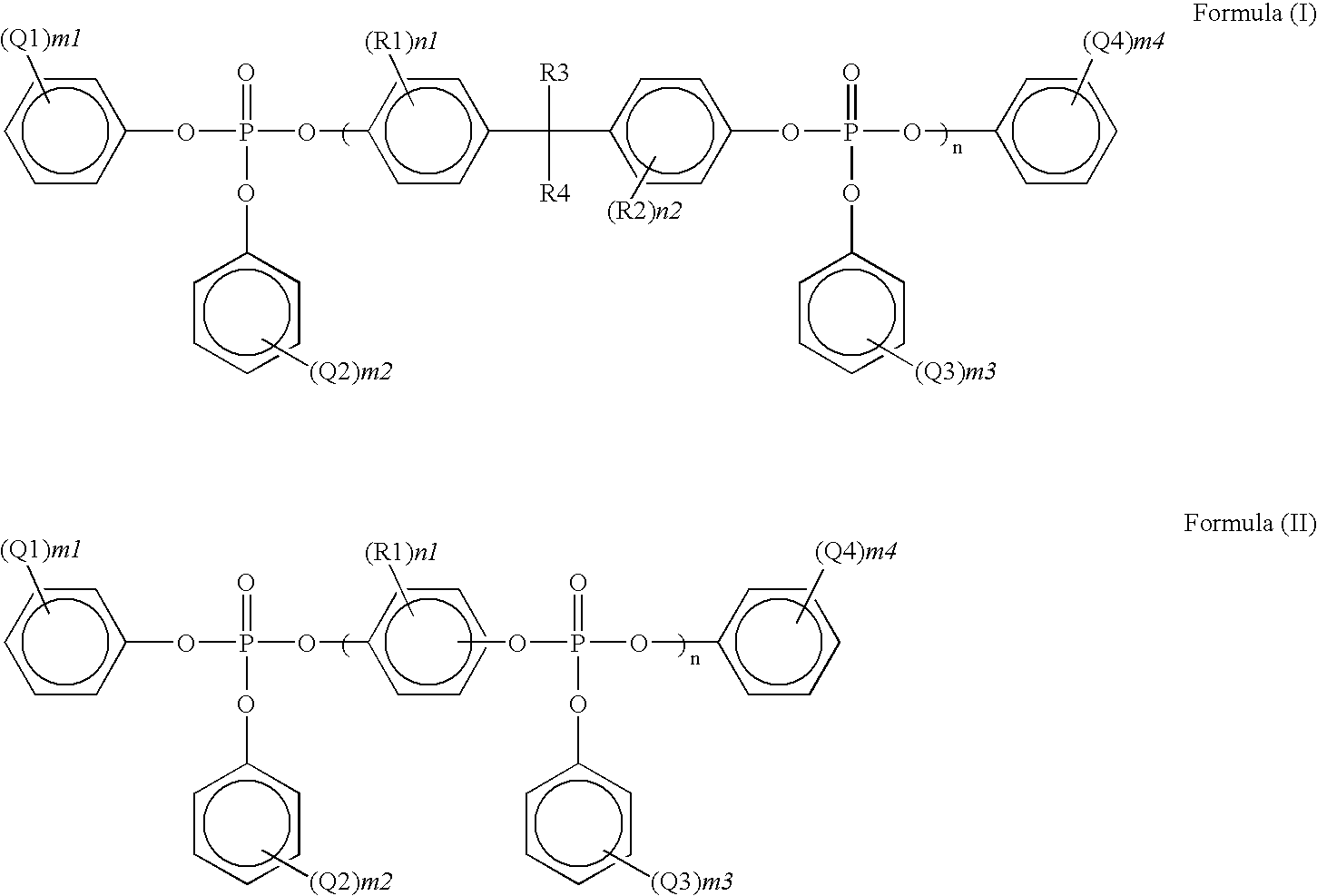Production process of polyphenylene ether composition
- Summary
- Abstract
- Description
- Claims
- Application Information
AI Technical Summary
Benefits of technology
Problems solved by technology
Method used
Image
Examples
examples
[0077] The present invention will be described with reference to the following Examples and Comparative Examples, which should not be construed as limiting the scope of the present invention.
[0078] The components used in the Examples and Comparative Examples are as follows.
(A-1) Polyphenylene Ether (PPE)
[0079] Poly(2,6-dimethyl-1,4-phenylene)ether whose reduction viscosity is 0.48 dl / g as measured using a chloroform solution having a temperature of 30° C.
(A-2) Rubber-Reinforced Polystyrene (HIPS)
[0080] High impact polystyrene (trade name: H9302; manufactured by PS Japan Corporation)
(A-3) Phosphoric Ester
[0081] FR1: Condensed phosphoric ester (trade name: CR-741; manufactured by Daihachi Chemical Industry Co., Ltd.) [0082] FR2: Condensed phosphoric ester (trade name: CR-733S; manufactured by Daihachi Chemical Industry Co., Ltd.) [0083] FR3: Condensed phosphoric ester (trade name: TPP; manufactured by Daihachi Chemical Industry Co., Ltd.)
[0084] In the Tables, (A-1′) indicat...
examples 1 to 9
[0110] At Step 1, a composition comprising the above-mentioned components, i.e., component (A-1′), component (A-2′) and tris-(2,4-di-t-butylphenyl)phosphite as a stabilizer, was fed through a first feed port located upstream of streamline to a twin-screw extruder equipped with a pressure reducing vent and a screw having a diameter of 40 mm wherein the maximum temperature of the heating cylinder was preset at 320° C. Then, while the composition was melt compounded at the screw revolution rate of 300 rpm under the absolute pressure of 100 hPa, the component (A-3′) was fed through a nozzle to the side of the extruder using a gear pump. The extruded strand was cooled and cut into pieces, thereby obtaining a pre-mixture (A). At Step 2, the pre-mixture (A), components (A-2″), (B), (C), (D), (E), and (F) were blended. The amount of each component was shown in Table 1.
[0111] To the above-obtained composition, 3 parts by weight of titanium dioxide as a colorant and 0.15 parts by weight of p...
example 10
[0112] An experiment was conducted under the same condition as in Example 1 except that the amount of component (A-2′) at Step 1 was changed. The results of the measurement and evaluation of the resin composition pellets are shown in Table 1.
PUM
| Property | Measurement | Unit |
|---|---|---|
| Temperature | aaaaa | aaaaa |
| Percent by mass | aaaaa | aaaaa |
| Percent by mass | aaaaa | aaaaa |
Abstract
Description
Claims
Application Information
 Login to View More
Login to View More - R&D
- Intellectual Property
- Life Sciences
- Materials
- Tech Scout
- Unparalleled Data Quality
- Higher Quality Content
- 60% Fewer Hallucinations
Browse by: Latest US Patents, China's latest patents, Technical Efficacy Thesaurus, Application Domain, Technology Topic, Popular Technical Reports.
© 2025 PatSnap. All rights reserved.Legal|Privacy policy|Modern Slavery Act Transparency Statement|Sitemap|About US| Contact US: help@patsnap.com



